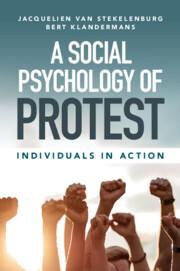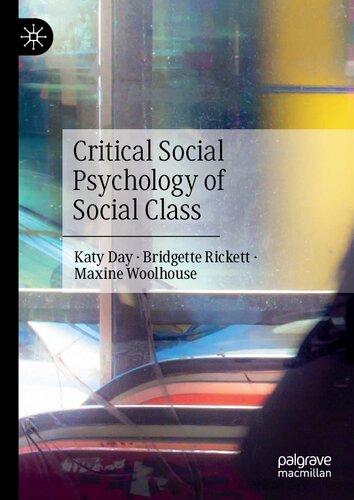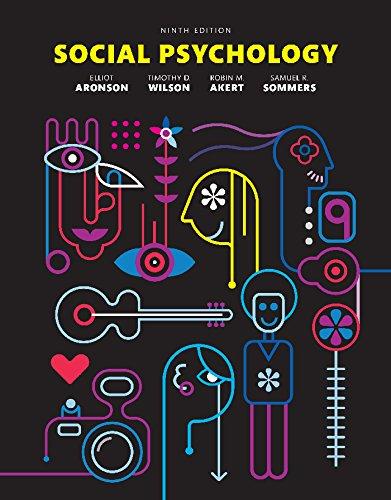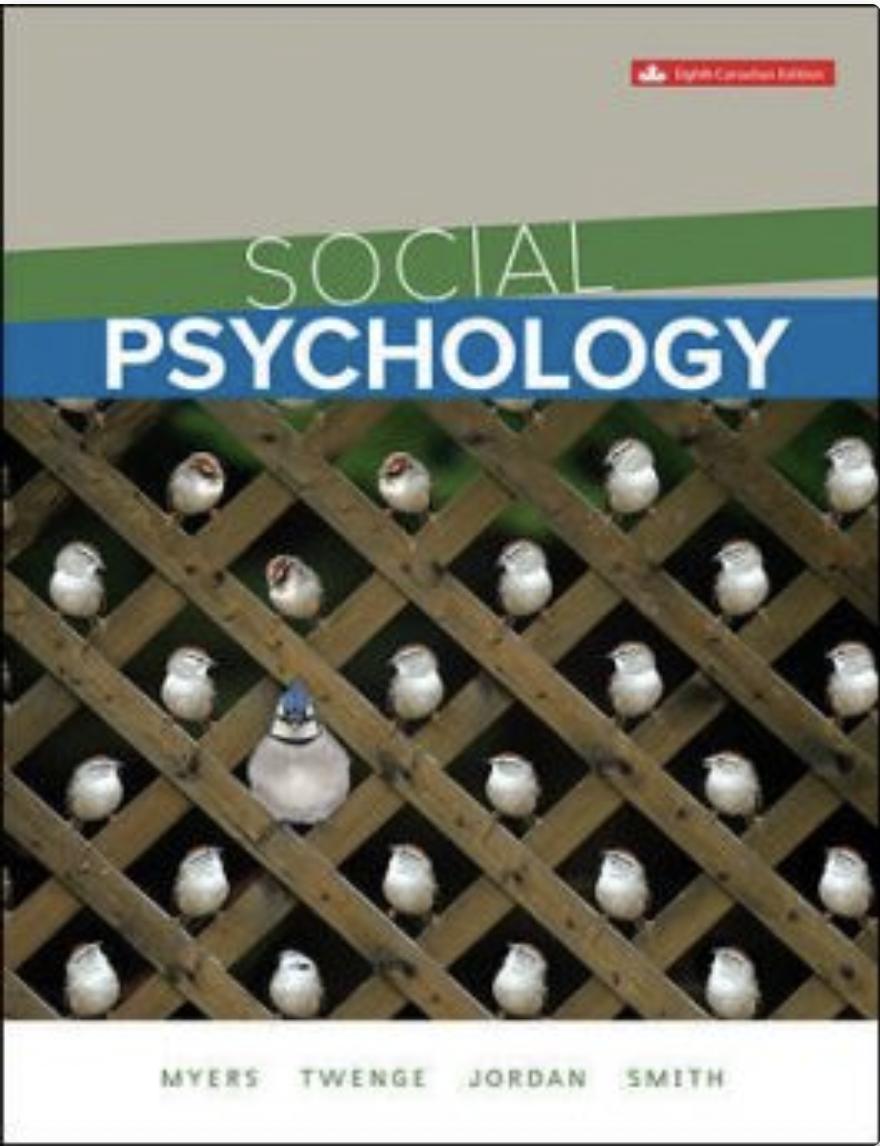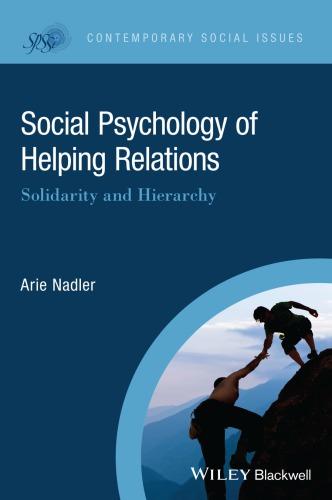ASOCIALPSYCHOLOGY OFPROTEST
IndividualsinAction
JACQUELIENVANSTEKELENBURG
VrijeUniversiteitAmsterdam
BERTKLANDERMANS
VrijeUniversiteitAmsterdam
ShaftesburyRoad,Cambridge ,UnitedKingdom
OneLibertyPlaza, thFloor,NewYork, ,USA
WilliamstownRoad,PortMelbourne, ,Australia
–, rdFloor,Plot ,SplendorForum,JasolaDistrictCentre,NewDelhi – ,India
PenangRoad,#–/,VisioncrestCommercial,Singapore
CambridgeUniversityPressispartofCambridgeUniversityPress&Assessment, adepartmentoftheUniversityofCambridge.
WesharetheUniversity’smissiontocontributetosocietythroughthepursuitof education,learningandresearchatthehighestinternationallevelsofexcellence.
www.cambridge.org
Informationonthistitle: www.cambridge.org/
©JacquelienvanStekelenburgandBertKlandermans
Thispublicationisincopyright.Subjecttostatutoryexceptionandtotheprovisions ofrelevantcollectivelicensingagreements,noreproductionofanypartmaytake placewithoutthewrittenpermissionofCambridgeUniversityPress&Assessment.
Firstpublished AcataloguerecordforthispublicationisavailablefromtheBritishLibrary. LibraryofCongressCataloging-in-PublicationData
:Stekelenburg,Jacquelienvan.,author.|Klandermans,Bert,author.
:Asocialpsychologyofprotest:individualsinaction/JacquelienvanStekelenburg, VrijeUniversiteit,Amsterdam,BertKlandermans,VrijeUniversiteit,Amsterdam. :NewYork,NY:CambridgeUniversityPress,[]|Includesbibliographical referencesandindex.
(print)|
(hardback)|
(ebook)|
(paperback)| (epub) : :Protestmovements–Psychologicalaspects.|Socialpsychology. : . (print)| (ebook)|
./–dc/eng/
LCrecordavailableathttps://lccn.loc.gov/ LCebookrecordavailableathttps://lccn.loc.gov/
Hardback
- Paperback
CambridgeUniversityPress&Assessmenthasnoresponsibilityforthepersistence oraccuracyofURLsforexternalorthird-partyinternetwebsitesreferredtointhis publicationanddoesnotguaranteethatanycontentonsuchwebsitesis,orwillremain, accurateorappropriate.
Contents
ListofFigures page vii
ListofTables ix
Acknowledgments x
Introduction
. WhatIsPoliticalProtest?
. AboutThisVolume:IndividualsinAction.ASocialPsychology ofProtest
TheIndividualasUnitofAnalysis
. ContextualizationofContestation
. TheIndividualAftermathofContention
. ToConclude
TheLegacyofthePast
. TheSociologicalBranch:FromCollectiveBehaviorto CollectiveAction
CollectiveBehaviorApproaches:StrainandBreakdownTheories
CollectiveActionApproaches:ResourcesandOpportunities
. ThePsychologicalBranch:MotivesandEmotions
. Meta-analyticalProof
MethodologicalApproachestotheSocialPsychologyofProtest
ToConclude
WhatIsContextualizedContestation?
SociologicalTheoriesofConflict
. TheSocialPsychologyofProtest
.
.
Coleman’sBoat:ContextualizedContestation
ToConclude
DynamicsofDemand
. Grievances
E
cacy
Identity
Emotions
. SocialEmbeddedness
. MotivationalConstellations
. WhyPeopleDon’tParticipate
ToConclude
DynamicsofSupply
IssuesandMulti-organizationalFields
MechanismsConstructingtheSupply
. OpportunitiestoParticipate
. ToConclude
DynamicsofMobilization
. ConsensusFormation
ConsensusMobilization
ActionMobilization
ToConclude
ContextMatters,ButHow?
ComparisonAcrossIssues,Countries,andTime
. WhatabouttheContext?
ParticipationinMovementPoliticsandPartyPolitics
. Contextualization:LessonsfromPOLPART
ToConclude
ShouldIStayorShouldIGo?
ShouldIStay SustainedParticipation
OrShouldIGo Disengagement
. ToConclude
Politicization,Polarization,andRadicalization
. Politicization
. Polarization
. Radicalization
ToConclude
Conclusion:TakingStock
IndividualsinAction
MappingtheContextualizationofContestation
. Movement’sIncline:TheIndividualAftermathofContention
. DisciplinaryCollaborationandComparativeDesigns
. ToConclude
References
Index
Figures
. Responsestogrievances page
. Formsofparticipation
. Marketmetaphorofprotest:Dynamicsofdemand,supply, andmobilization
Coleman’sboat
. Whenwewillobserverevolutionsaccordingto()Marx, ()DeToqueville,and()Davies
. Greekyouthin visualizedinColeman’sboat
. OlderGreekin visualizedinColeman’sboat
. Consensusformationandactionmobilizationvisualizedin Coleman’sboat
. Integrativemodelaccountingforprotestmotivation
. Streetdemonstration :Mobilizationandparticipation
. Signingapetition,
. Consensusformation:Howindividualsgeneratemeaning
. Consensusmobilization:Howorganizersconvince individuals
. Howidentificationwiththeorganizersmakeappealsand motivesalign
. Actionmobilization
Theprocessofactionmobilization
. Dynamicsofdemand,supply,andmobilizationalongthe linesofColeman’sboat
. Contextualizeddynamicsofmovementandparty politicscombined
. Anti-governmentdemonstrations,revolts,riots,andgeneral strikesineighteenWesterndemocraciesfrom to
. Typeofpoliticalactivitybytypeandintensityofcivic involvement
. Standardizedmeansofcivicmindednessandskillspertype ofinvolvement
. Thedynamicsofdisengagement
. Attentionforimmigrationandintegrationissuesontwo opposingwebforums(numberofwords)
Tables
. Paradigmaticdevelopmentofthesocialpsychologyof protestfrom to :Predictors page
. Paradigmaticdevelopmentofthesocialpsychologyof protestfrom to :Methods
Stronglymotivatinggrievances
. Regressionofmotivationalstrengthonmotives fornonparticipation
. Organizationalembeddedness:Demonstrators’ anti-austerity issuesvssocioculturalandpoliticalissues(%membership)
. Sourcesofnonsigning
. Grievancesamongcitizensofoldandnewdemocracies compared(percent)
. Contextualizedpoliticalengagementperissue(percent)
. Changeincontentofthediscussionbeforeandafter incidents(inpercent)
Acknowledgments
Studyingpoliticalprotestisachallengeinandofitself.Wemaintainthat suchresearchrequirescomparativedesigns.Initsturn,comparisonimplies collaborators.Throughtheyearssince TheSocialPsychologyofProtest was publishedwehaveenjoyedthesupportandinspirationofmanycolleagues fromallovertheworld.Yearsthatweremarkedbysomemajorstudiesof politicalprotestinvolvingscholarsfromEurope,West,South,Northand East,SouthAfrica,LatinAmerica,andtheUnitedStates.Withoutthese studiesandtheinspiringcollaborationsthisbookwouldnothavebeen possible.Thepagestocomebearwitnesstoourjointefforts.Although theyaretoomanytonameinperson,wewanttothankallofthosewho sharedourendeavors.
Inthe s,BertKlandermansconductedacomparisonoffarmers’ protestsintheNetherlandsandSpainwithJoseManuelSabucedo.It markedthebeginningofalong-termcollaboration.Inthelate s,a groupofEuropeanscholarsset-outtoconductlife-historyinterviewswith extreme-rightactivists.BertKlandermans,NonnaMayer,HansdeWitte, andBerndSimonweretheseniormembersoftheteam.
Afewyearslater,thetwoofus,JacquelienandBert,engagedinavast studyofnearly streetdemonstrations, , demonstrators,in Europeancountries,togetherwithStefaanWalgrave,JorisVerhulst, JeroenvanLaer,Marie-LouiseDamen,EvaAnduiza,JoseManuel Sabucedo,DonatelladellaPorta,ChrisRootes,ClareSaunders,Maria Grasso,MarcoGiugni,NinaEggerts,AbbyPeterson,MattiasWahlstrom, andMagnusWennerhag.
Finally,weconductedastudyofpoliticalparticipationamong , citizensinsevencountries – inWestandCentralEuropeandLatin America,inbothpartypoliticsandmovementpolitics – withMarcelo Rosa,ZsoltEnyedi,SwenHutter,AriekeRijken,SebastianPeireyra, TeodoraGaidyte,StephanPrice,CamilaPenna,TwanHuysmans, GergöZavecz,andClareSaunders.
Alltheseprojectswerearichsourceofideasanddatathatenabledusto focusontheprincipalquestionofthisbook,whydopeopleprotest, especiallyintheseswiftchangingtimestheyprovedinvaluableempirical sources – notintheleastthankstoourcollaborators.
Next,therewerethosecolleagueswhowerealwayswillingtotakea criticalandconstructivelookatourwork:SidneyTarrow,DaveSnow, JohnMcCarthy,MartijnvanZomeren,TomPostmes,PamOliver,the lateBillGamson,DougMcAdam,VertaTaylor,andMarioDiani.
LastbutnotleastawordofpraiseforourPhDstudents,whoalways challengedustostaysharp.PhDstudentsareagift – smart,eagertolearn, ajoytoworkwith.Wefeelprivilegedtohavebeenpartofthesometimes bumpyroadtotheirPhDs;manyofourPhDstudentswenowcallfriends.
JankaRomeroandRowanGroat,oureditorsatCambridge,deservea bigcheerfortheirsupportandpatience.Weimaginethatwewerenot alwayseasytoworkwith.Buttogetherwemanaged.
Introduction
In , TheSocialPsychologyofProtest (Klandermans, )appeared. Untilthentheoriesandapproachestocollectiveactionwerescattered throughoutpsychological,sociological,andpoliticalsciencejournalsand volumesinEuropeandtheUnitedStates. TheSocialPsychologyofProtest wasanattempttobringthesebitsandpiecestogether.Averysuccessful attempt – itbecameaclassicinthe field.However,thetwodecadesthat havepassedsinceitsappearancehavebeenvigorousdecadesinthe field and intheworld.Onecanseethisvolume – IndividualsinAction – asan attempttointegratetherecenteffortsandupdatetheassessmentofwhere wearetoday.
Since ,theworldofprotesthaschangedprofoundly.Takethe Internet,socialmedia,email,andsmartphones,whichgavetheworlda virtual “ stratum. ” In TheSocialPsychologyofProtest thereis nosingle referencetotheInternetorsocialmedia.Thiswouldbeinconceivable nowadays.Simultaneously,anewsocialfabricemerges,looselycoupled networksareaddedtotheorganizationandstructureofsociety,accelerated byeverrenewingICTs.Traditional “greedy” institutionssuchastrade unionsandchurcheswhichmadesignificantdemandsonmembers’ time, loyalty,andenergy(Coser, )arereplacedby “light” groupsand associationsthatareloose,easytojoin,andeasytoleave.Despitethis processofindividualizationpeoplearestillcommittedtocommoncauses. UnderlyingthisiswhatLichterman()calls “personalism”:peoplefeel apersonalsenseofpoliticalresponsibilityratherthanfeelingrestrictedor obligatedtoacommunityorgroup.Thesesocietalprocessesimplyprofoundchangesinprotestdynamicsthatcallforanupdateofempericism andtheory.
Protestnotonlychangedqualitatively,butalsoquantitatively,insuch anorderofmagnitudethatthe firstdecadeofthetwenty-firstcenturyhas alreadybeenbaptizedtheeraofprotest.In , TimesMagazine even chose “theprotestor” asthe PersonoftheYear.Virtuallyeverydaynews
mediadisplaystreetsandsquaresoccupiedbyprotestingcrowds.Our timesarecontentious,indeed.Whydoallthesepeopleprotest?Whyare peoplepreparedtosacrificewealth,apleasantandcarefreelife,orsometimeseventheirlivesforacommoncause?Thesequestionsarenotnew, theyhaveintriguedsocialscientistsforalongtime.Yet,forsocialand politicalpsychologiststhiscontentiouseracreatedrenewedinterestin collectiveaction.Asithappened,justafterthepublicationof TheSocial PsychologyofProtest,thesocialpsychologyofprotestsawanexplosive growth.Thisrenewedinterestisalsometa-analyticallyconfirmed(Van Stekelenburg,Anikina,etal., ;VanZomerenetal., ).We certainlyliveincontentioustimesandsocialandpoliticalpsychologists trytounderstandthepsychologicalaspectsofthissocialand politicalchange.
Until ,answerstothequestionastowhypeopleprotestgivenby socialandpoliticalpsychologyhavebeenprovidedintermsofgrievances andefficacy.However,theexplosivegrowthaddednewconceptstothe conceptual filingcabinetofsocialandpoliticalpsychologistsofprotest. Identity,andlaterdualidentityandpoliticizedidentitywere,bythen,new kidsontheblock.Furthermore,recentworkinsociologyandsocial psychologyhasbroughtemotionstothestudyofprotest(Goodwin etal., ;Jasper, ;VanStekelenburg, ;VanZomerenetal., ).Inourownworkweproposedtoconsiderideologyasanother element,whichcomesintoplaywhenissuesoreventsareagainstpeople’ s normsandvaluesandpeoplewanttoexpresstheirindignation (VanStekelenburgetal., ).A finalelementaddedtothe filing cabinetwassocialembeddedness(Klandermansetal., ).Studies publishedafter showedthat,inpractice,alltheseconceptsare clearlyinterwoven.
Hence,thesocialpsychologyofprotesthasexpandedenormously –theoreticallyandempirically – since .Thegeneralobjectiveofthis bookistosynthesizetheserecenteffortsandupdatetheassessmentof whereweare.Itaimstobringtogetherinsightsonprotestparticipation fromdifferentdisciplines(e.g.,socialpsychology,politicalpsychology, sociology,politicalscience)whichapproachprotestparticipationfrom complementarytheoreticalandmethodologicalangles.Wedeliberately aimtomergetheoryandwillabundantlyillustratethiswith – often,but notalways,ourown – empiricalmaterial.Thisvolumeaspirestofacilitate cross-fertilizationandmorecomprehensiveanalysesofprotestparticipation.Webelievethetimeisripeforsuchanintensifiedinterdisciplinary exchangewhicheventuallyshouldleadtoamoreintegratedapproachto
thesocialpsychologyofprotest.Thischapterprovidesanoverviewofthis volume,but firstwewilldevotesomewordstotheactivityofinterest: politicalprotest.
.
WhatIsPoliticalProtest?
Politicalprotestistheexpressionofobjectiontoacertainpolicy,political issue,orstateofaffairs.Protesterstakepartinprotesteventsthatarestaged bycitizensactinginconcerttoinfluencepolitics,topromoteorprevent change.Inotherwords,protestisaformofcollectivepoliticalaction.In thewordsofWrightandcolleagues(b,p. )anindividualtakes partincollectiveaction “anytimethat[s/he]isactingasarepresentativeof thegroupandtheactionisdirectedatimprovingtheconditionsofthe entiregroup.” Obviously,thisisnotlimitedtothemostprototypicalofall protests,namelystreetdemonstrations,butalsoincludesstrikes,political consumerism,signingpetitions,andmoreradicalformsofprotest,suchas riotsandpoliticalviolence.ThisdefinitionimpliesthattheactofanIS suicideterroristcanbecharacterizedasapoliticalprotest.Ascanmakinga deliberate,well-consideredchoicetobuyabaroffairtradechocolate,or signinganonlinepetitionwhilesittingatyourkitchentable(VanDeth, ).Althoughsomeactivitiesareundertaken alone,theystillconstitute collectivebehavior – afterallpeopleundertakethemaspartofagroup. Furthermore,politicalprotestis political behavior.Bradydefines politicalparticipationas “actionbyordinarycitizensdirectedtoward influencingsomepoliticaloutcomes” (Brady,citedinTeorelletal., ,p. ).Suchactioncantakeplaceinthecontextofmovementor partypolitics(Klandermans, a).Socialmovementsandpolitical partiesarethetwoprominententitiespracticingpoliticsindemocratic systems.Movementpoliticscentersonactivitiessuchassigningpetitions, massdemonstrations,occupationsofpublicsites,boycotts,donating moneytoamovementorganization,strikes,violenceagainstproperty andpeople,tomentionthemostcommonexamples.Partypolitics involvesactivitiessuchasvoting,contactingpoliticians,campaigning, donatingmoneytoapoliticalparty,partymembership,orrunningfor office.Recently,virtualformsofactionwereaddedtotherepertoire.
VanDeth()designsaconceptualmapofpoliticalparticipation. Heobservesthatpoliticalparticipationislikeanexpandinguniverse.Ever moreactivitiesareincorporatedaspoliticalparticipation,includingactivitiesthatareinprinciplenotpolitical,butaretransposedintoapolitical act,becausetheyarepoliticallymotivated(suchasboycotts,buycotts,or
communalgardening).Inguidingusthroughtheconceptualforestof politicalbehavior,VanDethassignsdifferentconceptualizationsinuse byscholarsandcitizensalike.Movementandpartypoliticsaredescribedas noninstitutionalandinstitutionalorunconventionalandconventional formsofpoliticalparticipation,respectively.Inthisbook, Individualsin Action,wewillmainlyfocusonwhatVanDethlabelsnoninstitutional politicalparticipation,contentiouspolitics,etc.Someformsmaynot directlybeobservedasprotest,takeforinstancecivicengagementand communityparticipation,astheymayhavetheformofvolunteering,but maybeaddressedtopowerholdersaswell,andcanthenbeseenasforms ofprotest.Wewillincludethoseinourdiscussiontoo.
Wehastentosaythatthisdoesnotimplythatsocialpsychologydoes notcontributetounderstandingwhypeopletakeactionininstitutionalizedpoliticalparticipation.Tothecontrary,aquickglancethroughthe journal PoliticalPsychology showsthatsocialpsychologicalapproachesare usedforvoting remain or leave intheBrexit-referendum(Macdougall etal., ),ordemand-sidepopulismandpoliticalpolarization(Erisen etal., ),and,yetanotherexample,howpoliticalleadershipcommunicatespopulistboundariesviaTwitterandtheeffectsonpartypreferences (Hameleers, ).Toputitevenstronger,socialpsychologicaltheories developedtopredictprotestbehavior,inspiredworkoninstitutionalized politicalparticipation.Forexample,politicizedidentitytopredictvoting (Turner-Zwinkelsetal., ),orso-calledprotestvotes(Otjesetal., ),or,astheauthorsthemselvessay,thecuriouscaseofanger inexplainingvotingintentions(VanZomeren,Saguy,etal., ).Allin-all,thisshowsthatsocialpsychologicalapproachesareemployedfor noninstitutionalizedandinstitutionalizedpoliticalparticipation,butthe focusofthisbookwillbeonpoliticalprotest,andthusnoninstitutionalizedpoliticalactions.
Politicalprotest,astheexpressionofobjectiontoacertainpolicy, politicalissue,orstateofaffairs,thusstartswithgrievances (Klandermans, ).Infact,inreactiontofeltgrievances,peoplemight exhibitavarietyofspecificbehaviorsdependingonhowtheyperceivetheir situation.Wrightandcolleagues(a)proposedasimpletaxonomy basedonthreeT-junctionspeoplemightencounterwhilecontemplating howtoreact(see Figure .):the firstisthatbetweeninactionandaction; inaction,asamatteroffact,appearsthemostfrequentlychosenoption. Interestingly,thefocusinmostliteraturealmostalwaysistheparticipant ratherthanthenonparticipant.Tryingtounderstandwhypeopletakepart incollectiveactionistheaim,ratherthanwhytheyfailtodoso.This
Non-contentious collective action
Contentious collective action
suggeststhatnonparticipationissimplyconsideredtheothersideof participation.Wemaintainthat,inreality,itismorecomplexthanthat andwewill,therefore,provideatheoreticalandempiricaloverviewto nonparticipationin Chapter .Thesecondjunctionisthatbetween actionsdirectedatimprovingone’spersonalconditions,forinstance, movingtoanotherjob(individualaction),andactionsdirectedatimprovingtheconditionsofone’sgroup(collectiveaction).Thethirddistinction isbetweennoncontentiouscollectiveaction,likepetitioningandtaking partinapeacefuldemonstration,andcontentiouscollectiveaction,likea siteoccupationorcivildisobedience.Thesedistinctionsareimportant becausewemayassumethatthemotivationaldynamicsunderlyingthe differentresponsesaredifferent.Indeed,someonewhoispreparedtosigna petitionmightverywellbeunwillingtotakepartinademonstrationor inclinedtouseviolencetoreachhisgroup’sgoals.
Engaginginsocialmovementsmostofthetimeimpliestakingpartin someformofcollectiveaction,andthiscollectiveactioncantakemany differentforms.Klandermans()distinguishedtheseformsofparticipationintermsof duration – adhocversussustained – and effort – weak versusstrong(see Figure .).Eversincecollectiveactionhasbeenstudied thisdistinctionhasbeenemployed.Forinstance(Marsh, ),Barnes andKaase(),Klandermans(),andDalton()allmade rankingsofactivitiesthatentailedmoreorlesscostsandrisksormoreor lesseffortandresources.Someformsofparticipationarelimitedintimeor ofaonce-onlykindandinvolvelittleeffortorrisk – givingmoney,signing apetition,ortakingpartinapeacefuldemonstration.Examplesinthe literaturearethedemonstrationandpetitionagainstcruisemissilesinthe
Figure . Responsestogrievances
DURATION
Limited Unlimited
E Low giving moneymembership
F signing petitions two nights a month
F peaceful demomanning the phone
O R
T High sit-in committee member unauthorized demo voluntary worker strike
Netherlands(Klandermans&Oegema, ;Oegema&Klandermans, ).Otherformsofparticipationarealsoshort-livedbutinvolveconsiderableeffortorrisk – asit-in,asiteoccupation,orastrike.Participation intheMississippiFreedomSummer(McAdam, )andparticipationin theSanctuarymovement(Nepstad&Smith, )arecasesinpoint. Participationcanalsobeindefinitebutlittledemanding – payinga membershipfeetoanorganizationorbeingoncallfortwonightsa month.See,foraninterestingcomparativestudy,Pichardoetal.(), whostudiedavarietyofsuchformsofparticipationintheenvironmental movement.Finally,thereareformsofparticipationthatarebothenduring andtaxinglikebeingamemberonacommitteeoravolunteerina movementorganization.Examplesarethemembersofneighborhood committees(Oliver, )andthemembersofunderground organizations.
Fromasocialpsychologicalviewpoint,taxonomiesofparticipationare relevantbecauseonemayexpectdifferentformsofparticipationtoinvolve differentmotivationaldynamics.Letusgivetwoillustrativeexamples. Long-term,taxingformsofparticipationaretypicallyofthekindthat youneedafewpeopleforitwhoarewillingtodothejob.Onceyouhave mobilizedthosefewyoudonotreallyneedmoreparticipants.Infact, moreparticipantsmightevencreatecoordinationproblems.Thisistypicallythesituationwherepeoplecananddotakeafreeride(Marwell& Oliver, ).Oliver()showsthatthefewwhodoparticipatein theseactivitiesareusuallyfullyawareofthefactthattheyaregivingafree ridetomostsympathizers,butitdoesn’tbotherthem.Infact,thisispart
Figure . Formsofparticipation(Source:Klandermans, )
oftheirmotivation: ‘ifIdonotdoitnobodyelsewilldoit’,theyreason (Oliver, ).Comparethistoastrike.Forastrikeyouneedsome minimalnumberofparticipants.Ifthisthresholdisnotpassed,alleffort isinvain.Intermsofthemotivationofparticipants,theproblemtobe solvedistomakepeoplebelievethatthethresholdwillbereached. Thisiswalkingathinline.Ifsomeoneexpectsthatfewwillparticipate, hisorhermotivationtotakepartwillbelow.Ifsomeonefeelsthat manypeopleparticipate,s/hemayconcludethathecanaffordtotakea freeride.
Knowingthatyouaregivingmanyothersafreerideorknowingthata thresholdmustbereachedaretwocompletelydifferentcognitions.The twoexamplesillustratethatdifferentformsofparticipationimplydifferent motivationaldynamics.Evenmoreobviousistheimpactofcostsonthe choiceoftypeofactivity.Highercostswillreduceparticipation. Discussionsofpoliticalprotestmustthustakeintoaccountthekindof activitywearetalkingabout.Thisbecameobviousinastudyofthe protestsagainstthecruisemissilesintheNetherlands,inwhich KlandermansandOegema(;Oegema&Klandermans, )comparedtakingpartinastreetdemonstrationin andsigningapetition in .Althoughtheproportionofsympathizerswiththeprotestgoals weremoreorlessthesameduringthetwocampaigns,theparticipation figureswereverydifferent: percentofourrespondentsintendedtosign thepetitionand percentdidindeedsign,whereas percentintended totakepartinthedemonstrationand percenteventuallytookpart.Not onlywastheproportionofpeoplepreparedtosignapetitionmuchhigher thantheproportionofpeoplewhowerereadytotakepartinademonstration,thevastmajorityofthosepreparedtosignendedupsigning, whilemorethanhalfofthosewhointendedtotakepartinthe demonstrationeventuallydidnottakepart( percent).Indeed,themuch moremoderate,low-costactivityofsigningapetitiongeneratesmuchless defectorsthanthelessmoderatemorecostlyactivityofparticipatingina demonstration.Inoneoftherarecomparativestudiesoftypesofmovementparticipation,Passy()foundindeedthatthemotivational dynamicsofvariousformsofparticipationweredifferent(seealso Saunders, ;VanStekelenburgetal., ).Moreover,theinternet andsocialmediahavechangedthecollectiveactionrepertoireevenfurther, forexample,thinkofpost-itactivismandclicktivism.Theunderlying motivationaldynamicsofthesedigitalrepertoiresofactivismarehotly debatedintheliterature(e.g.,Enjolrasetal., ;Hirzallaetal., ; Valenzuela, ).
. AboutThisVolume:IndividualsinAction.
ASocialPsychologyofProtest
Thecentralquestionunderlyingthisvolumeis: whydosomepeopleprotest, whileothersdon’t? Weaimtomergetheoryandevidenceonprotestpolitics wherebyindividualsalways figurecenterstage – whataretheirfears,hopes, andconcerns?Whatgroupsdotheyidentifywith?Aretheycynicalabout politicsordotheytrusttheirauthorities?Whatarethechoicestheymake, themotivestheyhave,andtheemotionstheyexperience?Whydothey decidetostayor,forthatmatter,radicalizeorleavethemovement?
Indoingso,thebooktakesasocialpsychologicalapproachtocontention.Itfocusesonsubjectivevariablesandtakestheindividualasitsunitof analysis.Assuch,itdistinguishesitselffromsociologicalandpolitical scientificworkoncontention.Sociologistsandpoliticalscientiststypically analyzethemeso-andmacrolevelandemploystructuralapproaches.The socialpsychologicalapproachtakesthemicrolevelasapointofdeparture andconcentratesonquestionsofhowindividualsperceiveandinterpret theseconditionsandfocusesontheroleofcognitive,affective,and ideationalrootsofcontention.Yet,thedecisiontoprotestisnottaken inasocialvacuum.Tothecontrary,we firmlybelievethatthepolitical powerplayis – bydefinition – foughtoutinthesociopoliticalintergroup context,andthusthat contestationiscontextualized.Thisbringsustothe socialpsychologyofprotest,andthefocalpointofthisbook.The first threechaptersofthisbookaredevotedtowhatwemeanbyasocial psychologyofprotest.Itwilldescribeitsepistemology,history andmethods.
Thesecondpartofthebook, Chapters –,dealswithcontextualized contestation.Manystudieshavedrawnattentiontorisinglevelsofpolitical protest.Peopleprotestgovernment’seconomicand/orpoliticalpolicies, corruption,stolenvotes,anti-war,pro-environment,etcetera.Indeed, grievancesabound,butthetranslationfromindividualgrievancesinto collectiveprotestisn’talwayseasy.Klandermans()decomposesthe dynamicsofcontextualizedcollectiveactionintodemand,supply,and mobilization.Protestisbornoutofdissatisfaction,butitalsoneeds organizerstoexpressthisdissatisfaction,andmobilizationtobringthis demandandsupplytogether.This “marketmetaphor” functionsasthe roadmapofthesecondpartofthebook.
Thethirdpartofthebook, Chapters and ,isdevotedtotheprocesses underlyingtheformationofamobilizationpotential.Theperspective presentedinthissectionholdsthatinstancesofcollectiveactionarenot
independent.Indeed,afundamentalfactaboutcollectiveactionisits cyclicity(Koopmans, ).Mostresearchonprotestconcernsacomparisonofparticipantsandnonparticipantsinaspecificinstanceofmobilizationorparticipationataspecificpointintime – beitademonstration,a boycott,asit-in,arally,apetition,orelse.Itraisesthequestionofwhat processesunderlietheformationofamobilizationpotential?Inthe final partwewill firstdevoteattentiontosustainedparticipationanddisengagement,andfocusonthequestion “shouldIstay,orshouldIgo?” Moreover, asprotestcycles “mobilizetheorganized,butalsoorganizethedemobilized” (Tarrow, ,p. ),wewilldevoteourlastchaptertopoliticization,polarization,andradicalization,allprocessessteeringmobilization.
Allinall,thebookprovidesthreeuniquelensestosocialmovement literature,namely() Theindividualasunitofanalysis,() Contextualization ofcontestation,and() Theindividualaftermathofcontention.Next,wewill elaborateeachofthem.
TheIndividualasUnitofAnalysis
Protestsarecollectiveactionsinwhichcitizensaremobilizedtochallenge powerholders,authorities,orthewholesocietytoredresssocialproblems orgrievancesandrestorecriticalsocialvalues.Ofcourse,indemocratic societiescitizenscaninfluencepoliticsthroughelections.Butwhatabout theperiodbetweenelections?Whatarecitizenstodoiftheywantto influencepoliticsduringthoseyears?Moreover,politicaldecision-makers arenottheonlyaddressees,indeed,notallprotestsareanti-government, butalsoagainst firms,organizations,societyatlarge,etcetera.Abrieflook atthepoliticalpastandpresentsufficestoconcludethat,inalldemocracies,citizensengageinallkindsofnoninstitutionalactionwiththe objectivetoinfluencepoliticsortoexpresstheirviews – somecontentious, othersexpressive;someindividual,othercollective;somepolitical,others apolitical.Infact,protestisoneofourmostimportantdemocraticrights. Andtheseactionshaveachievedmanyresults.Buttheroadtosuccessfor socialmovementsiscomplex,sometimesrisky,andusuallylastsmany years.Indeed,protesting – especiallysustainedprotest – isn’teasy.Why, then,arepeoplepreparedtosacrificewealth,apleasantandcarefreelife,or sometimeseventheirlivesforacommoncause?Thisquestionbringsusto thesocialpsychologyofprotest,andthefocalpointofthisbook.
Thebookopenswiththeepistemology,history,andmethodsofthe socialpsychologyofprotest.Indoingso,itwilldelineatethereasonsand consequencesoftakingtheindividualasaunitofanalysis.This
methodologicalpointofdeparturereflectstheattentiongiventothesocial constructionofrealityasa filterbetweencontextualconditionsand individualactions.Suchanapproachhighlightsthefactthatallsocial phenomena – socialstructuresandsocialcausalproperties – depend ultimatelyonfactsaboutindividualsandtheirsocialrelationships.An assertionofastructureorprocessatthemacrosociallevelmustbesupplementedbyaccountofhowitisthatordinarycitizens,situatedinspecified circumstances,cometoactinwaysthatproduce,reproduce,ortakeaction againstthesocietalstructuresorinstitutions.Associalpsychologyexplores thecausesofthethoughts,feelings,andactionsofpeople – andprimarily howtheseareinfluencedbysociopoliticalcontext – itiswell-versedtodo so.People – socialpsychologistsnevertireofassertingus – liveina perceivedworld.Theyrespondtotheworldastheyperceiveandinterpret itandifwewanttounderstandtheircognitions,motivations,andemotionsweneedtoknowtheirperceivedandinterpretedreality.Asocial psychologicalapproachhighlightsthepointthatallsocialfacts – social structuresandsocialcausalproperties – dependultimatelyonindividualor sharedperceptionsofthesurroundingreality.So,inordertomake assertionsaboutthecausalpropertiesofgovernmentsorcivilsocieties, forexample,howpoliticalopportunitystructuresaffectlevelsofprotest, weneedtoarriveatananalysisofthesocialconstructionofrealityasa filterbetweensociopoliticalconditionsandindividualactionpatterns.
Keytoourmethodologicalstarting-pointisthatsocialoutcomesneedto beexplainedintermsofindividualcognitions,emotions,andbehavior; their(in)formalandvirtualrelationships;andtheiractions.However,itis importanttorecognizethatthebasicbuildingblocksofsocialexplanations arenotmutuallyindependentactionsperformedbyatomisticindividuals. Rather,individuals’ actionsaretypicallyorientedtowardothers,andtheir relationstoothersthereforearecentralwhenitcomestoprotest.So,our accountalsoidentifiesthesocialenvironmentsthroughwhichactionis structured,planned,andprojected:thesocial(andvirtual)circles,its incentivesystems,theorganizationspeopleareembeddedin,andthe systemsofrulesandlaws(e.g.,isdemonstratingillegalorlegal?).
We fi rmlybelievethatcontextplaysamajorrole,beitthesociopoliticalcontext,orembeddednessin(in)formalandnowadaysvirtualnetworks.Socialembeddedness – thequantityandtypesofrelationships withothers – isthelinkingpinbetweenindividualandsociety.Itcanbe formalrelationshipsasinpartyme mbershiporbeingamemberofthe laborunion,informalrelationships,suchasfriends,familycolleagues, andvirtualrelationshipssuchasactiveparticipationinblogs,social
media,etc.(VanStekelenburg&Boekkooi, ).Indeed,theinternet hascreatedanadditionalpublicsphere;peoplearenowadaysembedded invirtualnetworksaswellinaddit iontoformalandinformalphysical networks.Thesenetworksarewherepeopletalkpoliticsand,thus,where thefactualityofthesociopoliticalworldisconstructed,andpeopleare mobilizedforprotest.
. ContextualizationofContestation
Thesecondpartofthebookdealswithcontextualizedcontestation.Many studieshavedrawnattentiontorisinglevelsofpoliticalprotest.Alloverthe worldpeopleprotestgovernment’seconomicand/orpoliticalpolicies, corruption,stolenvotes,anti-war,pro-environment,etcetera.Indeed, grievancesabound,butthetranslationfromindividualgrievancesinto collectiveprotestisn’talwayseasy.Infact,thecentralissueoforganizers intheirstrugglebetweenthemovementandthepowerholdersistowinthe hearts(sympathies),minds(publicopinion),andactivesupportofthe people.Translatedtotheworldofprotest,thisrefersto “supply” and “demand” ofprotest.Protestisbornoutofdissatisfaction,butitalsoneeds organizerstoexpressthisdissatisfaction.Weunderstandprotestasarising fromaninteractionbetweenindividualandcollectiveactorssuchas parties,interestgroups,andmovementorganizations.Themoreindividualsareembeddedinsuchorganizationsandnetworks,themoretheyget involvedintheirinteractions.Thisapproachdepartsfromthenotionthat theanswertoquestionssuchaswhoprotests,whypeopleprotest(i.e., issues),andtheformsofcontention(e.g.,demonstrations,strikes,sitins etcetera)liesintheinteractionofindividualandcontextualcharacteristics.
Klandermans()decomposesthiscontextualizedcollectiveactioninto thedynamicsofdemand,supply,andmobilization.
This “marketmetaphor”– visualizedin Figure . – hasourspecial attentionasitfunctionsastheroadmapforthesecondpartofthebook. Demand referstothemobilizationpotentialinasocietyforprotest;it relatestotheinterestinasocietyinwhatamovementstandsfor.Isthe movementaddressingaproblempeoplecarefor?Isthereaneedfor amovementontheseissues?Whatpersonalgrievancespoliticizeand translateintopoliticalclaims,andhow? Supply,ontheotherhand,refers totheopportunitiesstagedbyorganizerstoprotest.Itrelatestothe multiorganization fields,definedas “thetotalpossiblenumberoforganizationswithwhichthefocalorganizationmightestablishspecificlinkages” (Curtis&Zurcher, ,p. )andthecharacteristicsofthemovement.
Sociopolitical context
Cleavages, political opportunity structure, repression
dynamics of demand of politics
Mobilization potential: - grievances - political efficacy - identities - emotions - social embeddedness
dynamics of supply of politics
Marketmetaphorofprotest:Dynamicsofdemand,supply,andmobilization
Whatorganizationalformsareused?Whatisthemovement’sstrength? Isitamovementpeoplecanidentifywith?Doesitstageactivities thatareappealingtopeople?Demandandsupplydonotautomatically cometogether. Mobilization istheprocessthatlinksdemandandsupply. Itcanbeseenasthemarketingmechanismofthemovementdomain. Mobilizationcampaignsattempttobringdemandandsupplytogether. Themobilizingstructureorganizersassembleistheconnectingtissue betweenthesupply-sideoforganizersandtheirappealsandthedemandsideofparticipantsandtheirmotives.Thismakesithighlydynamic: a fit – ormisfit – betweenmotivesandappealsmakesforsuccessfulor failedmobilizationandassucheffectsmovementoutcomesandeffects.
TheIndividualAftermathofContention
DruryandReicher()suggestthatprotestparticipationgeneratesa “positivesocial-psychologicaltransformation.” Theyarguethatparticipationstrengthensidentificationandinducescollectiveempowerment(see alsoKlandermans, ).Theemergenceofaninclusiveselfcategorizationas “oppositional” leadstofeelingsofunityandexpectations ofsupport.This empowers peopletoopposeauthorities.Suchaction
Protest
Action mobilization
Mobilizing structure
Consensus mobilization
Figure
creates collectiveself-objectification,thatis,throughcollectiveaction,categoriesbecomesalient,itdefinestheparticipant’sidentityoppositethe dominantoutgroup(Drury&Reicher, ).Assuch,takingitonto thestreetsstrengthensempowermentandpoliticization,pavingthewayto sustainedparticipation.Sustainedparticipationneednotnecessarilytake theformofthesameactivityallthetime.Peopleoftengofromoneactivity toanother,sometimesfromonemovementtoanother,andinsodoing buildactivistcareers.
Theperspectivepresentedinthissectionholdsthatinstancesof collectiveactionarenotindependent.Themostfundamentalfactabout collectiveactionisitscyclicity(Koopmans, ).Protestcycles “mobilize theorganized,butalsoorganizethedemobilized” (Tarrow, ,p. ). Tarrowmaintainsthat “althoughprotestwavesdonothavearegular frequencyorextenduniformlytoentirepopulations,anumberoffeatures havecharacterizedsuchwavesinrecenthistory” (Tarrow, ,p. ). These “featuresofcyclicity” include “heightenedconflict,broadsectoral andgeographicextension,theappearanceofnewsocialmovementorganizationsandtheempowermentofoldones,thecreationofnew ‘ master frames’ ofmeaning,andtheinventionofnewformsofcollectiveaction.” Hence,atthestartofnewprotestcyclesnewmovementsappearonthe stage,andoldorganizationsrevitalize.Thisrenewedactivityatthesupply sideofprotestmobilizestheorganized,butalsoorganizethedemobilized. Assuch – andimportantinthecontextofsocialpsychologicalconsequencesofprotest – newprotestcyclesnotonlyaffectthesupplysideof politics,butalsothedemandsideofpolitics.Andso,theebband flowof protestcyclesknowtheirownsocialpsychologicalprocesses.
Justrecentlysocialpsychologistspickedupthis fluiditydimensionof collectiveaction.Theyrefertoitasthe volatility ofcollectiveaction, characterizedbyswift,unexpectedchangesinintensity,target,andforms (Louisetal., ).Inthisinspiringoverviewarticle,Louisandcolleagues provideadetailedsocialpsychologicalexplorationoffourreasonsofthis volatility.First,actionisaboutidentitieswhichare fluid,contested,and multifaceted.Asthecontentofgroups’ identitieschange,sodothespecific normsfortheidentities.Second,socialmovementsadoptnewtacticsor formsofcollectiveaction.Tacticalchangesmayarisefromchangesin identity,butalsochangesinthetargetoropponentgroups,andchangesin therelationshipswithtargetsandwithotheractors.Factionsorwingsofa groupinconflictmayinturnformidentitiesbasedonoppositionor supportfordifferingtactics.Third,socialmovementschangebecause participantmotivationebbs,surges,andchangesinquality(e.g.,becoming
moresubjectivelyautonomous,orself-determined).Finally,politicalsocial changeoccurswithinsociopoliticalstructures;thesestructuresimplicate higherlevelnorms,whichbothconstrainandemergefromactions(e.g., stateopennessorrepression).Theiranalysispresentsidealizedanddescriptivemodelsoftheserelationships,andanewmodeltoexaminetactical changesempirically,theDIMEmodel(Louisetal., ).ThisDIME modelhighlightsthatcollectiveactorscan Disidentifyafterfailure(givingupandwalkingaway);theycan Innovateortrysomethingnew;and theycancommitharder,convincedthattheyareright,withincreased moralurgency(M oralization)andredoublede ff orts( Energization).The takehomemessageoftheiroverviewpaperisthatcollectiveactionis volatile,andthatsocialpsychologyhasalottooff ertounderstand thisvolatility.
Moreover,in declining movementswithmany “exiters” sustainedparticipationcantaketheformofradicalization(DellaPorta&Tarrow, ).TakeforinstancetheviolentBlackPanthers,whoplayedashort butimportantpartinthecivilrightsmovement.Theybelievedthatthe nonviolentcampaignofMartinLutherKinghadfailedandthatany promisedchangestotheirlifestyleviathe “traditional” civilrightsmovementwouldtaketoolongtobeimplementedorsimplynotintroduced. Hence,consideringthedecliningcivilrightmovement,both disengagement and radicalsustainedparticipationwereobserved. People’smotivations,identities,andemotionschangeovertime,andsocial psychologists’ tool-andtheoryboxcanbehelpfultounderstandhowthis effectstheiractivismovertime.The finalpartofthisvolumeisdevotedto thiscyclicityor,asdescribedbyLouisandcolleagues,volatilityof collectiveaction.Wewilldiscusshowsuchmattersasempowerment, disengagement,andincreasedpoliticization,polarization,andradicalizationpreventorpromotesustainedparticipation.
. ToConclude
Inthe firstchapterofthisbook,wemeanttointroducethereadertothe fascinatingworldofpoliticalprotest.Ortobemoreprecisetothesocial psychologicalreflectionthereof.Additionally,weintroducedthethree lensesofthebook,namely()Theindividualasunitofanalysis,() Contextualizationofcontestation,and()Theindividualaftermath ofcontention.
Infocusingontheindividualasaunitofanalysis,wedifferentiate protestparticipationfromotherformsofpoliticalparticipation.Our
emphasisinthisbookwillbeonprotestpolitics.Protestasameanof communication.Citizensgathertoaddressauthoritiesandcommunicate theirindignation.Theseprotestscantakenumerousformsandorganizers makestrategicdecisionsaboutwhichactionformtochoose.Citizensare morelikelytomobilizeforoneactionthantheother.Whatfactors influencetheirchoices?Whoarethesecitizensthatoccupythestreets andsquares,orforthatmattersignanonlinepetition,andwhatmotivates themtodo?Researchofpoliticalparticipationtendstoneglectthatevenin identicalcircumstancesindividualsdivergeinthewaystheyactpolitically. Important,thisisnottosaythatpartypoliticsareabsent.Afterall,citizens cananddotakeeitherroutetoinfluencedependingonhowtheyseethat fittotheirobjectives.Indeed,thetwoformsofpoliticsinfluenceeach other.Movementsreacttopartypolitics,whilepartiesreacttomovement politics.Notonlydopartiesandmovementsreacttoeachother,citizens alsodifferinthisrespect,somedisenchantedcitizenshaveturnedtheir backoninstitutionalizedpolitics,andtrytoinfluenceauthoritiesviathe noninstitutionalizedroute,whereasothersstrategicallyoptfortheoneor theotherarena,forthemmovementpoliticsarepoliticswithothermeans (VanStekelenburg&Klandermans, ).Sucharethequestionsweare goingtoanswerin Chapters and .
Withthenextlens,Contextualizationofcontestation,weaimtomerge disciplinaryapproachestosocialmovementresearch.Researchintosocial movementsandproteststreatsdemandandsupplyforprotestandmobilizationasitsconnectingtissueasiftheywereseparateworlds.Itis preciselytherelationshipbetweendissatisfactionandorganizersissuing callstoactionthatwefocuson.Socialmovementstudiestendtoconcentrateonmobilizationandneglectthedevelopmentofdemandandsupply factors.Yet,neithercanbetakenforgranted.Indeed,grievancesabound, butwemuststillexplainhowgrievancesdevelopandtransformintoa demandforprotest.Similarly,thepresenceoforganizationsstagingprotest doesnotrelieveusfromtheobligationtoaccountfortheirformationand forhowtheystageopportunitiestoparticipateinthem.However,the processbywhichsocietiesgeneratedemandforparticipationandthe transformationofwillingnessintoparticipationbysupplyfactorsisa thornybutunderexposedissueintheliterature(Diani&McAdam, ;Jasper, ;Klandermans, ).In Chapters – wewilldelve deeperintothesecontextualdynamicsofprotestparticipation.
Finally,wepayattentiontotheindividualaftermathofcontention. Whilethemainsectionofthebookwillfocusonsocialpsychological antecedentsofprotest,amuchsmaller – butrelativelynewand
innovative – sectiondealswiththesocialpsychologicalconsequencesof protest.Wearguethatcyclicity,andthussustainedparticipation,isnearly absentinthesocialmovementliterature(butseeSantosNascimento, ).Surprisingly,becauselong-termparticipantskeepthemovement going,in Chapters and ,wewilldiscusshowsuchmattersasdisengagement,empowerment,andincreasedpoliticization,polarization,and radicalizationpreventorpromotesustainedparticipation.
